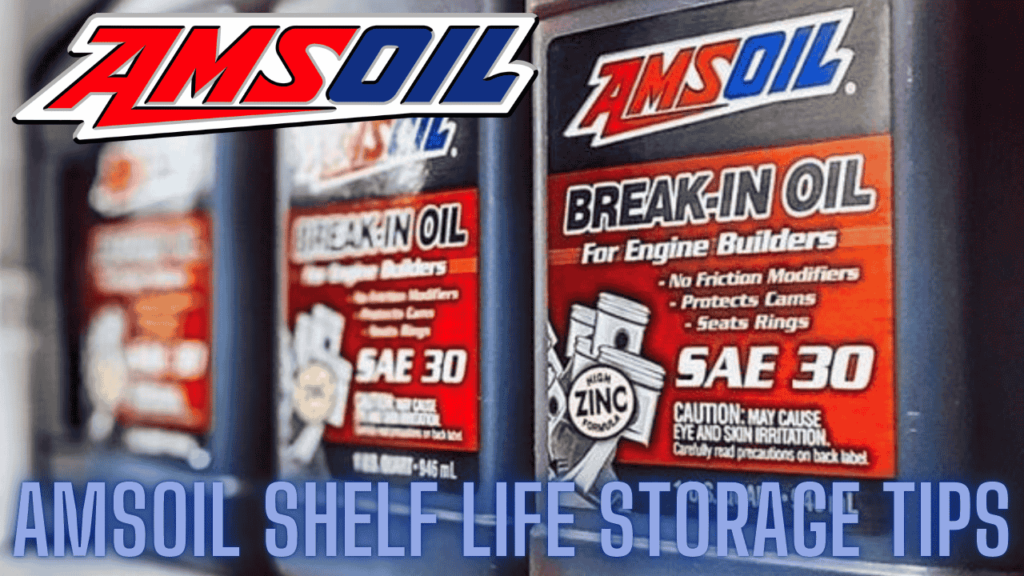
Maximizing the Shelf Life of AMSOIL Products | Essential Storage Tips
AMSOIL synthetic lubricants are renowned for their durability and industry-leading performance. However, even the best lubricants require proper storage to maintain their quality over time. By storing AMSOIL products correctly, you can keep them fresh and effective, ready to perform when you need them most. In this guide, we’ll cover the key storage tips to maximize the shelf life of AMSOIL products, including keeping containers indoors, avoiding environmental exposure, and much more.
What Is the Best Way to Store AMSOIL Products?
To extend the life of AMSOIL lubricants, store them indoors, protect containers from direct sunlight, keep them off the ground on pallets, and store unopened drums horizontally (except grease products). Proper storage conditions can preserve motor oils, greases, and transmission fluids for years, maintaining their original effectiveness and protecting your investment.
Why Proper Storage is Crucial for AMSOIL Lubricants
AMSOIL products are built to withstand harsh operating environments, but storage conditions also play a critical role in maintaining their quality. Indoor storage minimizes exposure to temperature fluctuations, moisture, and contaminants like dust and debris, which can impact product efficacy. By following AMSOIL’s recommended storage practices, you can be confident your lubricants will perform as intended, even after long-term storage.
Essential AMSOIL Storing Tips for Lubricants
1. Store Products Indoors
Indoor storage helps maintain stable temperatures and keeps lubricants away from moisture and contaminants. AMSOIL products stored in a controlled indoor environment experience fewer temperature shifts and maintain their integrity for longer. A clean, dry area is ideal.
2. Protect Containers from Environmental Elements
Lubricants should be kept away from direct sunlight, dust, and humidity. Exposure to sunlight can cause container degradation and product breakdown, while dust and debris may contaminate the oil. Ensure containers are covered and stored away from windows, doors, and drafty areas.
3. Keep Containers Elevated on Pallets
Storing containers on pallets, rather than directly on the floor, prevents moisture buildup on the bottom of the containers and protects against potential rust. This small step extends the lifespan of metal drums and minimizes the risk of contamination, especially if stored near exterior doors.
4. Store Drums Horizontally (Except Grease Products)
Large containers, such as drums, should ideally be stored horizontally to prevent water from pooling on the top, reducing the risk of corrosion. However, AMSOIL grease can remain upright for easy access.
5. Maintain Stable Temperatures
Temperature stability is key to preserving lubricant quality. Avoid placing containers in areas that experience high heat or freezing temperatures, as extreme conditions can cause oil degradation or thickening, impacting product usability.
6. Limit Exposure to Air
When a container is opened repeatedly, it exposes the lubricant to air, potentially leading to oxidation. To prevent this, keep containers tightly sealed when not in use and open them only when needed.
7. Label and Date Containers for Inventory Management
Use labels to mark the date of purchase and the date the container was first opened. This makes it easier to follow a first-in, first-out (FIFO) rotation, reducing the chance of using products that may have degraded due to prolonged storage.
How Long Can AMSOIL Products Be Stored?
Under proper storage conditions, AMSOIL products are designed to last:
•Motor Oils: Up to 5 years when stored correctly.
•Grease: Up to 3 years if kept in original containers.
•Transmission Fluids and Gear Oils: Similar to motor oils, they maintain quality for up to 5 years.
These timeframes assume ideal storage practices, but always check the product label for specific guidance.
Common Questions About AMSOIL Storage and Shelf Life
Can AMSOIL Products Be Stored Outside?
Storing AMSOIL products outdoors isn’t recommended due to exposure risks. However, if outdoor storage is the only option, ensure containers are fully covered, kept off the ground on pallets, and protected from direct sunlight and extreme temperatures. Covering the containers minimizes moisture and sunlight exposure, reducing the chances of degradation.
How Can I Tell if a Lubricant Has Gone Bad?
Look for visible signs of degradation, such as separation, discoloration, or an unusual odor. If you notice any of these signs, the lubricant may no longer be effective. Using degraded oil can harm equipment, so it’s best to replace products that exhibit these issues.
What’s the Shelf Life of Unopened AMSOIL Products?
AMSOIL lubricants generally last for up to 5 years when stored under proper conditions in unopened containers. Greases typically have a shelf life of up to 3 years. Properly stored, these products retain their effectiveness and performance capabilities, ensuring you get the most out of every container.
The Importance of AMSOIL Shelf Life for Equipment Longevity
Following these storage practices helps you keep AMSOIL lubricants in optimal condition, maximizing their shelf life and ensuring you always have high-quality products ready for use. This attention to detail can make a significant difference in equipment performance, as using fresh, uncontaminated lubricants minimizes wear and tear on engines and machinery.
Final Thoughts | Maximize Your AMSOIL Product Investment
By properly storing AMSOIL products, you’re not only protecting the integrity of your lubricants but also safeguarding your equipment from potential damage caused by degraded oils. Proper storage ensures you get the most value out of your investment, whether you’re a fleet manager, garage owner, or lubricant enthusiast.
Call to Action
For more information on AMSOIL storage and to purchase products designed for long-term performance, visit Vyscocity.com today or contact us directly.










